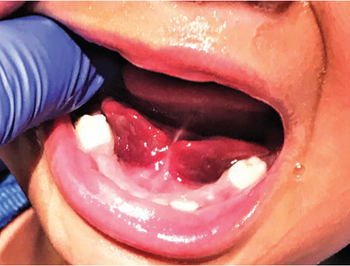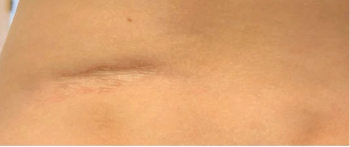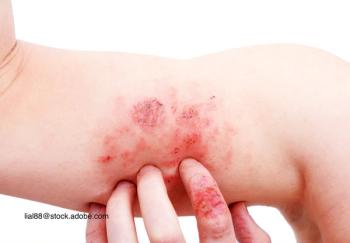
The US Preventive Services Task Force (USPSTF) has issued draft recommendations that highlight the need for further evidence on the efficacy of hypertension screening in pediatrics.

The US Preventive Services Task Force (USPSTF) has issued draft recommendations that highlight the need for further evidence on the efficacy of hypertension screening in pediatrics.

The COVID-19 pandemic continues to rage, but many questions remain. Questions like: How are children coping with the trauma many families are currently experiencing in their family lives? Are schools and pediatric offices prepared to help children and adolescents cope with their losses?

Contemporary Pediatrics spoke with Andrew J. Schuman, Editorial Advisory Board member, clinical assistant professor of Pediatrics, Geisel School of Medicine at Dartmouth, Lebanon, New Hampshire, and practicing pediatrician, about incorporating virtual patient visits-telehealth-into one’s pediatric practice during these times of social distancing and self-quarantine.

The COVID-19 pandemic has financially stressed pediatric practices, with many seeing only 20% to 30% of their typical caseload. The president of the American Academy of Pediatrics (AAP) has called on the US Department of Health and Human Services (HHS) to provide immediate no-strings financial help.

Reading is an important part of childhood and a key to future success. A new study shows that children prefer books with a high amount of causal information.

A new study in Pediatrics examined the trends in malpractice lawsuits, including how many are the subject of a lawsuit and whether the indemnity has changed.

Everyone has a slightly different take on the issues surrounding COVID-19 according to their practice, history, and a dozen other factors. These issues need to be addressed as a country.

Prekindergarten (pre-K) is a key way to prepare children for school and the benefits of a high-quality program can have long-term benefits.

Telemedicine can help provide care to many patients in need, but it won’t always be smooth sailing. There are many potential problems that can arise. Here are 5 common ones.

A 17-month-old African American girl, with no significant past medical history, is brought to the Pediatric Emergency Department with acute onset of swelling in the floor of her mouth. What's the diagnosis?

The US Food and Drug Administration (FDA) has approved selumetinib (Koselugo; AstraZeneca) for treatment of neurofibromatosis type 1 (NF1) in patients aged 2 years and older.

A new study connects an asthma diagnosis to type 1 diabetes (T1D) development later in life but also shows that the opposite may not be true.

The National Institutes of Health has updated drug labels for doxycycline, clindamycin, and caffeine citrate. The label changes address recommended usage and dosage in pediatric populations.

Arm pain is a common complaint in young athletes but playing though shoulder pain can have serious consequences. Here is guidance for diagnosing shoulder pain and helping these players get their game on.

Contemporary Pediatrics presents an on-demand webinar with pediatric experts that addresses the multitude of concerns arising from the COVID-19 pandemic.

Children who struggle with rare food allergies may have multiple food restrictions, with little understanding as to what really helps.

The flu season appears to be tapering off, according to a new report from the Centers for Disease Control and Prevention. The season has been a particularly harsh one for pediatric patients.

Life-threatening allergies are difficult to live with, in more ways than one.

Vaping has been identified as a gateway for teenagers to smoke combustible cigarettes. A new study looks at the characteristics that might create that gateway.

A new report on preliminary findings from the Centers for Disease Control and Prevention suggests that pediatric cases of COVID-19 may not develop the hallmark symptoms of infection such as cough and fever.

Utilizing the current data known, the American Academy of Pediatrics (AAP) has issued guidance for caring for newborns who are born to mothers with COVID-19.

Electronic cigarettes and vaping products are subjecting adolescents and young adults who use them to severe lung injuries from nicotine exposure. Here’s how to counsel your young patients about the health risks of these devices.

Anxious parents present their healthy 9-year-old son for evaluation of a slowly enlarging plaque that began developing on his lower back 3 months ago. What's the diagnosis?

The US Food and Drug Administration has approved ixekizumab (Taltz, Eli Lilly) injection, 80 mg/mL, for use in pediatric patients to treat moderate-to-severe plaque psoriasis. The approval means that the drug is the first interleukin 17A (IL-17A) agent available for use in pediatric patients.

Housing assistance programs are associated with lower emergency department (ED) use by children with asthma.

Second-generation antipsychotics (SGAs), used alone or with other psychotropic medications, are associated with metabolic disturbances, primarily weight gain and losses in triglyceride and high-density lipoprotein (HDL) values, a retrospective study in 128 youngsters showed. However, the changed values usually were within the normal reference values and often were not recognized.

Time spent with nature is a prescription for better physical and mental health. Families can encourage nature play at home both in the home and outdoors. Here are 6 ways to recreate some of the areas at the Gaffield Children’s Garden in Ann Arbor, Michigan, at home.

Notes in the electronic health record (EHR) have long been promoted as a way to keep patients involved in their care and to cut down on inquiries about what’s in the record. A new study shows that this promise is being kept.

Treatment regimens that include ondansetron as the antiemetic of choice for children who visit a pediatric emergency department for acute migraine are safe and effective, according to a retrospective review.

The American Academy of Pediatrics’ (American Academy of Pediatrics) newly issued recommendations for supervising the health care of children with Williams syndrome are based on a review of the current literature along with the consensus of physicians and psychologists with expertise in managing this condition, which is caused by a deletion of part of chromosome 7.